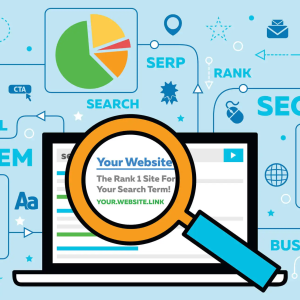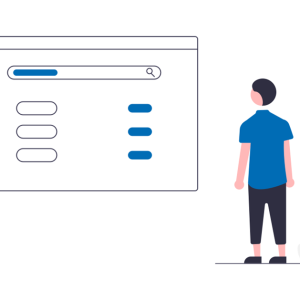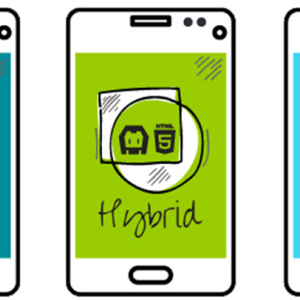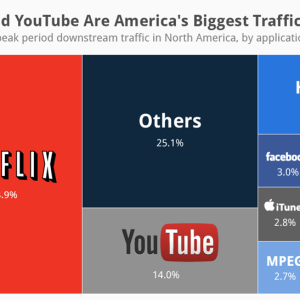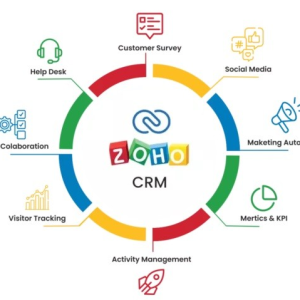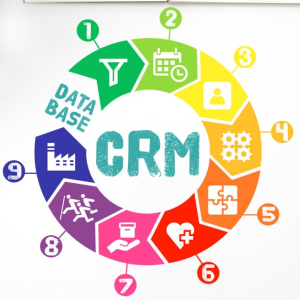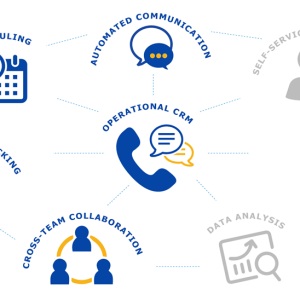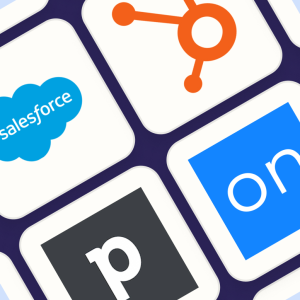Introduction
Email, the widely accepted medium of modern communication, has emerged as an indispensable tool of unparalleled convenience, swiftness, and operational ease. Although, similar to any other form of communication, it poses potential perils to its users. In the current era, with the advent of cutting-edge hacking techniques, it is imperative for businesses to exhibit a cautious approach towards employing email as a mode of communication. This article strives to furnish a comprehensive guide on the measures to evade email hazards and security attacks, coupled with valuable insights on how to fortify your business from the possible threats.
What Are Email Threats And Security Attacks?
Email threats are a diverse collection of offenses that are perpetrated through the medium of electronic mail. These harmful attacks can be directed at a sundry array of targets, such as individuals, commercial entities, or governmental institutions.
Security breaches, which are incursions that exploit vulnerabilities in email accounts or networks, encompass a vast scale of techniques utilized by hackers to achieve their objectives. These wicked tricks are not limited to the extension of malware or phishing attacks but also encompass the deployment of social engineering tactics and the insidious ransomware.
How Common Are Email Threats And Security Attacks?
Cybersecurity threat trends report suggests that at least one person clicked a phishing link in around 86% of organizations. The company’s data suggests that phishing accounts for around 90% of data breaches.
CISCO 2021
The meteoric ascent of hackers’ sophistication has engendered a sharp escalation in the prevalence of email threats and security attacks, afflicting numerous businesses with a crippling impact. Recent studies reveal that the rate of cyberattacks targeting email-dependent businesses has skyrocketed in recent years, a trend that shows no signs of abating anytime soon. In fact, statistics demonstrate that a staggering 3.8 billion emails teeming with malware inundate the digital realm on a daily basis, posing an imminent threat to the integrity of corporate data.
To exacerbate matters, the scourge of social engineering attacks continues to ravage businesses, where employees are lured into divulging confidential information or unwittingly granting access to company accounts and networks, making them vulnerable to cyber incursions.
Types Of Email Attacks And Security Threats
In the labyrinthine landscape of the digital realm, businesses must remain attuned to the diverse panoply of email attacks and security threats that pervade the cyberspace. Among the myriad of threats that impede corporate security, a few that merit special attention are malware, phishing, social engineering, and ransomware.
Malware
Malware, a vicious type of software that undermines the functionality of computers, can be surreptitiously implanted through a host of nefarious means, including email attachments, infected websites, and sundry other methods of malevolent propagation. The repercussions of malware could be catastrophic, entailing colossal data loss or even irrevocable damage to the IT infrastructure.
Tips To Avoid Email Malware
In the never-ending battle against email malware, there are a few critical measures that can be taken to safeguard oneself against these insidious threats. These measures include installing a reliable antivirus program, exercising caution when opening emails, refraining from clicking on suspicious emails, and ensuring that one’s computer software is always up to date.
#1 Antivirus Program
The first line of defense against email malware is installing an antivirus program on one’s computer. These programs are designed to detect and eliminate malware before it can inflict any harm, making them an essential tool in the fight against email-based cyberattacks. However, make sure that you are equipping a trusted and robust software program to ensure that your system is being protected efficiently against the latest threats.
#2 Keep an eye out for spam emails
Additionally, it’s crucial to remain vigilant when opening emails, particularly those from unknown or suspicious senders. These emails may contain malware payloads that can infect one’s computer, leading to data breaches or other security issues. Therefore, it’s prudent to delete such emails immediately without opening them.
#3 Do not click on suspicious emails
Another critical measure is to avoid clicking on links in emails, particularly those that appear suspicious or originate from unknown sources. Many malware programs are disseminated through email links that are designed to trick recipients into clicking on them unwittingly. Thus, it’s imperative to exercise caution and verify the authenticity of links before clicking on them.
#4 Keep your computer up to date
Lastly, keeping one’s computer software up to date is an essential step in protecting against email malware attacks. Hackers often exploit vulnerabilities in outdated software and operating systems to infiltrate systems and deploy their malware payloads. Hence, updating one’s software and operating systems can significantly enhance one’s cybersecurity posture.
In summary, a robust defense mechanism against email malware attacks necessitates the careful combination of vigilance, caution, and technological fortifications. To shield oneself against the impending dangers of malware attacks, one must proactively install a reliable antivirus program that can serve as an strong protection against the dangers of the digital landscape.
Furthermore, exercising an abundance of caution while accessing emails, and exercising extreme discretion while responding to any suspicious emails, can avert the harmful effects of email attacks. By keeping one’s computer software up-to-date, one can bolster the technological underpinnings that can prevent cyberattacks and safeguard oneself from potential security breaches that could wreak havoc on one’s business.
Phishing Attack
The pervasive threat of phishing attacks, a common type of social engineering attack, seeks to ensnare unsuspecting victims in a web of deceit by bombarding them with fraudulent emails aimed at extracting sensitive information or conversing unauthorized access to their accounts and networks. Phishing attacks take on many forms and could involve duplicitous requests to click on links, divulge personal information or even download malware-loaded attachments.
The intricate web of trickery that underlies phishing attacks requires businesses to be highly attuned to the dangers of such tactics and take decisive measures to defend against them.
Tips To Avoid Getting Phished
In today’s digital age, email security has become a crucial concern for businesses and individuals alike. To protect oneself from email-based cyberattacks, it’s essential to be aware of red flags that may indicate malicious intent, avoid clicking on links, and implement multi-factor authentication measures.
#Be aware of red flags
One of the most common warning signs of email-based cyberattacks is the presence of grammatical errors, which can often indicate that the email was not composed by a legitimate sender. Additionally, unexpected senders or requests for personal information should be viewed with suspicion and approached with caution.
#Avoid Clicking
Another crucial measure to prevent email-based cyberattacks is to avoid clicking on links contained in emails. These links can redirect one to malicious websites that can infect one’s computer with malware or steal sensitive data. Therefore, be cautious and verify the authenticity of the threat before you click on the links.
#Multi Factor Authentication
Finally, it is important to consider MF authentication, also known as multi-factor authentication measures to improve email security. MF authentication requests users to provide added identification factors, such as a password and a verification code to access their accounts. You would have seen such a type of method when using WhatsApp and other social media applications. This added layers improves security of system and can greatly reduce the risk of security attacks and ensure that only a person of authority is able access the sensitive information with a reduced risk of cyberattacks.
If you have already been phished:
If by any chance, you have reason to suspect that your business has fallen prey to a phishing attack or security breach, it is crucial to act with alacrity and take swift remedial measures. A first line of defense involves urgently contacting your IT department or security team to initiate a prompt investigation of the matter and take evasive measures to safeguard your data.
While the wheels of investigation turn, it is imperative to change your passwords and maintain constant vigilance over your account activity to avert any further encroachments by the wily perpetrators of email threats and security attacks. By taking these critical measures, one can mitigate the deleterious impact of cyberattacks and bolster the defenses of one’s business against future attacks.
Social Engineering
Social engineering attacks are a veritable hydra that adopts many heads, with phishing emails just one of the many. The threat extends to the realm of phone calls, text messages, and sundry other forms of electronic communication, each vying for a piece of the hapless victim’s soul.
The underlying mechanism of these attacks involves impersonating legitimate entities or corporations to hoodwink unsuspecting individuals into divulging sensitive information or conferring unbridled access to their accounts and networks. In the face of such artifice, it is imperative for businesses to remain perpetually on high alert and take pro-active steps to defend against these attacks.
Tips To Avoid Social Engineering Attacks
The complexities and nuances of email communication are not to be trifled with. It is imperative that businesses remain ever-vigilant in the face of a looming, and increasingly sophisticated, threat: social engineering attacks. These malicious ploys pose a grave danger, with their diverse and crafty nature. To steer clear of these attacks, we offer the following salient recommendations:
- Abstain from opening emails emanating from unfamiliar sources.
- Exercise great caution when confronted with attachments or links in emails from unrecognizable persons.
- Exercise due diligence and wariness when perusing unexpected emails, even those that come from acquaintances. Should an email seem to deviate from the norm, it could be indicative of a hacked account.
- Refrain from divulging sensitive financial or personal information in emails, as this can prove to be a critical vulnerability.
- In the event that an email from a familiar organization or company is received, it is advisable not to respond to it. Instead, directly contact the company in question to ascertain the email’s legitimacy.
These guidelines, if adhered to carefully , will aid in safeguarding your business from the dangerous hazards posed by social engineering attacks. Nonetheless, this raises the question: what about ransomware?
Ransomware
Ransomware is a type of malware that restricts users’ access to their computer systems or files until a ransom is paid. This can often be delivered through email attachments, infected websites, or other malicious methods.
Tips to Avoid Ransomware Attack
The consequences of ransomware attacks are extensive and should not be taken lightly. This particular form of malware is notorious for encrypting files stored on a user’s computer, thereby coercing a substantial ransom payment for the decryption of said files. Such attacks can impose an exorbitant financial burden on businesses, with ransom payments often climbing to astronomical figures. Hence, we have compiled some appropriate recommendations to prevent ransomware attacks:
Keep your operating system and software up to date
Ensure that your operating system and software are up-to-date, as outdated software serves as a primary vulnerability for ransomware attacks, making them more susceptible to security flaws and exploits.
Multi-factor Authentication
In addition to strong passwords, use multi-factor authentication to fortify your system’s defenses against hackers who may attempt to purloin your login credentials. This dual-layered authentication methodology is invaluable in safeguarding against malicious activity.
Back up your data regularly
This will ensure that you have a copy of your data in case it is encrypted by ransomware.
Maintain Caution
Be cautious when opening email attachments and clicking on links. These are common methods used by hackers to deliver ransomware to computers.
Install and use reputable antivirus and antimalware software
Lastly, installing reliable antivirus and antimalware software can effectively identify and eradicate potential threats before they can wreak havoc on your files.
With the ever-evolving nature of cyber threats, businesses must remain vigilant in their efforts to stay one step ahead of attackers. Taking proactive measures like staying up to date on the latest security protocols and implementing best practices can help mitigate the risks of unknown attacks and safeguard your business against harm.
But first, there are more subtypes, those we will look into.
Email threats are a perilous and multifarious lot, capable of camouflaging themselves and exploiting vulnerabilities. Common types of email threats in 2023 include:
Spoofing: One of the most insidious of these dangers is spoofing, whereby malicious email senders impersonate legitimate organizations or individuals to deceive unwary recipients into divulging sensitive information or allowing access to their accounts and networks. This nefarious tactic is akin to social engineering, in that it aims to manipulate and deceive people.
Keyloggers: Another treacherous form of email threat is keyloggers, a type of malware that clandestinely records every keystroke made on an infected computer, thereby allowing hackers to gather login credentials, credit card numbers, and other confidential information. Such a covert attack can be devastating to unsuspecting victims.
Zero-day exploits: Equally insidious are zero-day exploits, which are security vulnerabilities that are unknown to software manufacturers, thus enabling hackers to exploit the flaw and gain access to email accounts or networks before the security loophole can be patched. Such attacks can be difficult to detect, but vigilant monitoring of core data and regular updates to security protocols can help mitigate the risks.
By keeping your operating system and software up to date, you can reduce the chances of zero-day exploits, which capitalize on unknown security flaws. The world of email security is constantly evolving, and businesses must stay abreast of the latest threats and take appropriate steps to safeguard their data and networks.
Whaling: High-level executives or other influential people are targeted in this type of social engineering attack to gain access to sensitive information or accounts.
Account hijacking: Malicious actors take over email accounts and use them for their purposes, often by changing account passwords and canceling security notifications.
Malvertising: Malicious ads are placed on legitimate websites to redirect users to infected websites or download malware onto their computers.
Smishing: Fraudulent text messages are sent to trick recipients into providing sensitive information or granting access to their accounts and networks.
Pharming: A vicious technique used to redirect innocent users from legitimate website URLs to deceitful ones. This is done by manipulating the DNS settings on infected computers to make them go astray.
Vishing: Cunning attackers can use a variety of electronic communication methods, such as phone calls or text messages, to swindle users into disclosing sensitive information such as card details, which can then be utilized to infiltrate into the systems.
Botnets: An ominous army of internet-connected devices that have been contaminated with malevolent software and are being exploited by hackers to disseminate malware and other abominable activities.
Man-in-the-middle attacks: An attack where malevolent actors get in-between the communications between two parties to acquire access to sensitive information or accounts. The information may then be used to conduct heinous activities.
Spyware: A treacherous type of malware that can collect confidential information about a user’s online activities, such as passwords and other critical data, which can then be used to send spam emails or execute other malfeasance.
Although there are several other never ending threats, businesses can equip themselves to navigate this challenging terrain by adopting various strategies such as performing regular surveillance of their core data, religiously updating their software, and implementing stringent security protocols to reduce the risk of cybercriminals penetrating your defenses.
How Do Hackers Target Businesses Through Email?
Attackers are always inventing new techniques to attack users with their nefarious methods, but there are a few ways that have been religiously used by the attackers in the past, they are:
#1 Phishing Attack Emails
Phishing emails are notorious for masquerading as legitimate sources, often from trusted entities such as banks or other commercial entities that a recipient has established relationships with. They are cleverly crafted to lure users into divulging their sensitive information, such as passwords or credit card numbers, which could then be used to perpetrate fraud or other malicious acts.
#2 Spam
Spam emails are unsolicited and often sent in huge volumes, raising the probability of malicious content being present. Such emails can potentially contain malware or links to malevolent websites. Inadvertently clicking on one of these links could lead to malware infection or a redirected attack to a phishing website.
Businesses need to be aware of these threats and take steps to protect themselves
- One effective strategy is to educate employees about the risks of phishing emails and spam. With the right knowledge, employees can avoid inadvertently falling for a hacker’s trap.
- Another way to protect your business from email threats is to employ a reputable email filtering service that can block unwanted and potentially dangerous emails. This type of service can scan emails for malicious links or attachments, stopping them before they can do any harm.
- Additionally, configuring email servers to require authentication for incoming messages can provide an extra layer of security against hackers. And, regularly backing up important data can help to reduce security breach.
Although this is not an extensive list on how, making sure you follow these measures will help you safeguard your data against threats, and it is important to do it as of today, if not done yet.
How Can Employees Help To Protect The Business From Email Threats And Security Attacks?
Employees of a business can too participate in taking neccessary measures to avoid from risking their business information to the attackers.
- Employees should make sure to educate themselves on the various techniques these attackers use to compromise sensitive data,
- You should make sure your systems are up to date with the latest software and make sure you have an antivirus protection system installed to reduce the risk of malware.
- Use strong passwords and do not share the passwords to anyone or copy them to unprotected files on your system.
- Finally, make sure you have the backup of the information stored safe as to use when there is a security breach.
Take forward your business by making sure you are employed with the right knowledge about the potential email attacks and security breaches you may be a victim to. The knowledge on phishing attacks and security attacks will help you safeguard yourself and your company from any threat.
Conclusion
The ubiquity of email threats and security attacks in the contemporary digital landscape demands the attention of businesses worldwide. Cybercriminals have honed their craft and employ multifarious techniques to infiltrate corporate email systems, seeking to steal sensitive information, disrupt business operations or worse.
The constant onslaught of email threats and security attacks is a major concern for businesses of all sizes. These threats can wreak havoc on a company’s operations, disrupt their business continuity, and cause untold financial losses. But fear not, as a cybersecurity solutions provider, 12 channels can help mitigate these risks and keep your business secure.
Our team of experts is dedicated to providing tailored solutions that address the unique needs of your business. We offer a comprehensive suite of services that can help safeguard your digital assets, prevent unauthorized access, and ensure business continuity. Whether you need email filtering services, multi-factor authentication, or employee training, we have the expertise to help.
Don’t wait until it’s too late to protect your business from email threats and security attacks. Contact us today, and let us help you navigate the complex world of cybersecurity. Together, we can keep your business safe and secure in the face of evolving threats.

